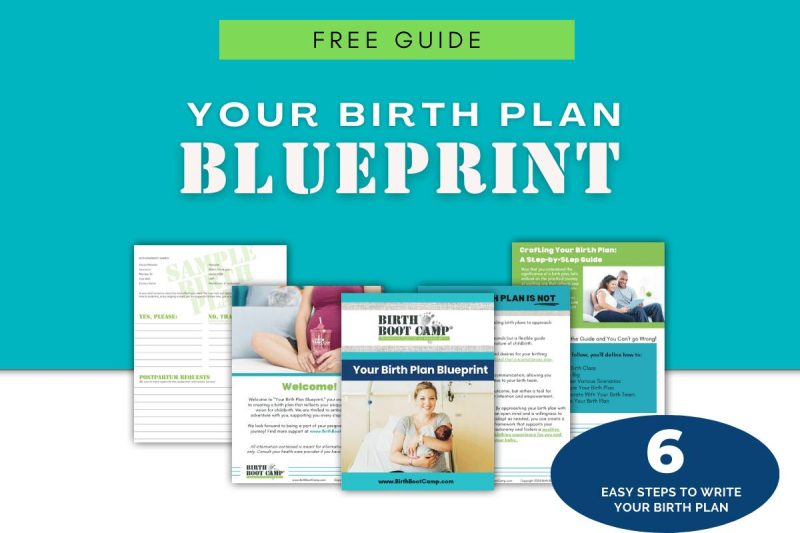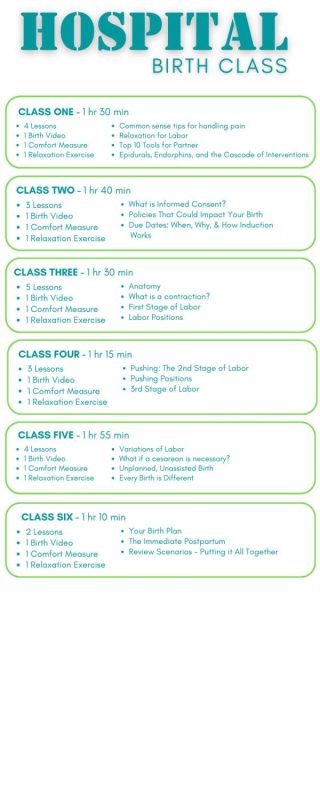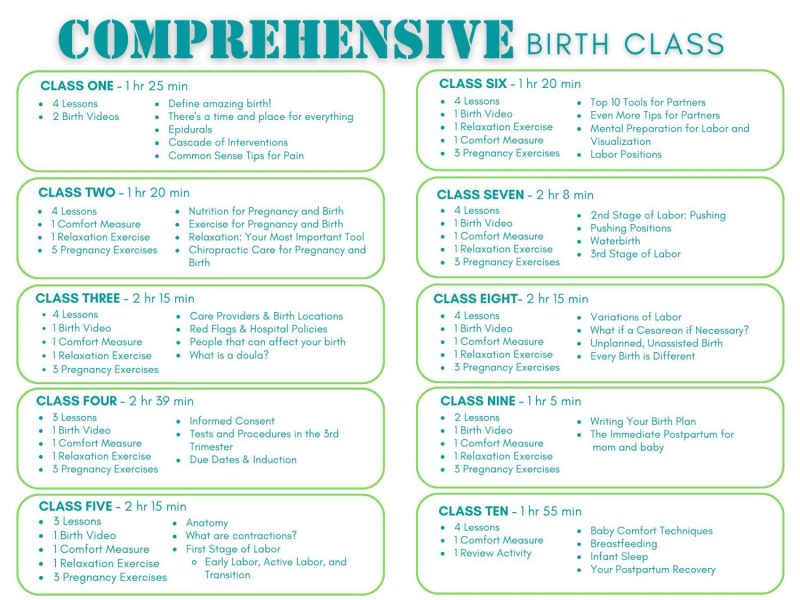The Cascade of Interventions
If you are taking a childbirth class, you will inevitably hear the term, cascade of interventions. No, we aren’t talking about a waterfall or dishwasher soap that leaves your glasses sparkling. When it comes to childbirth, the cascade of interventions is a term used to describe how one intervention in birth can lead to another, and another, and another until the whole process seems to spin out of control.
Understanding the Cascade of Interventions in Childbirth
Let’s walk through what is considered a typical cascade of interventions in birth.
Exploring the Journey of Birth: From Anticipation to Intervention
Our birthing mom goes into labor. She is excited! The day to meet her baby has finally come! Thrilled at the prospect of having a baby, she and her partner quickly pack their bags and head to their birthing place.
When she arrives at her hospital she goes through admissions, fills out paperwork, has some standard tests done, and receives a vaginal exam. She is found to be three centimeters dilated and her contractions have slowed a little. They are now five to seven minutes apart.
Because this birthing woman is five days past her due date, she is admitted. Protocols at her hospital demand she receive a mandatory IV. A needle with a bag of saline is hooked up to her and she is given fluids and her vein is kept open, just in case more fluids are needed later.
The birthing mother is attached to two straps, one to measure the fetal heart rate, and one to measure her contractions. This is known as continuous fetal monitoring, and it often requires that the birthing woman not leave the bed because these monitors are easily disturbed or inadvertently moved.
The mother is now confined to the bed because of her monitors and her IV. In her recumbent position, she finds that the excitement for labor has dissipated, and her pain level has increased. Her partner is feeling somewhat helpless as he sits to the side of her bed, blocked by the rails and his lack of knowledge.
The birthing woman is having vaginal exams every hour or two, and while her contractions are becoming more painful, her body seems to be making little or no progress. She measures just four centimeters dilated. Hospital staff has broken her water in an effort to help speed labor. Many believe that breaking water can encourage dilation and help the head drop and allow more pressure on the cervix.
The Reality of Birth Interventions: Navigating the Cascade
After three hours of struggling in the bed, mom opts for an epidural to help her pain and allow her to rest. The epidural is not a stand-alone product. Along with her epidural comes a bladder catheter, continuous monitoring, more IV fluids and a possible intrauterine pressure catheter. The epidural gives her respite but slows the contractions. She is given Pitocin in her IV. Pitocin is known to help strengthen and speed contractions. The Pitocin seems to work well, and her contractions speed and her cervix cooperates. After several more hours she is found to be 8 centimeters dilated.
Our birthing mother has now been in labor for many hours and her water has been broken for some time. The birthing woman begins to develop a low-grade fever. It is hard to know what caused this- is it a side effect of some of the interventions so far, or is mom developing an infection? Mom is given two more hours to labor.
The baby and mother, however, seem to have had enough. Her cervix seems stuck at 8 centimeters and the baby is not handling contractions well as time goes on.
Mom is prepped for a cesarean section. Her baby is taken via c-section, and a healthy 7 pounds 6-ounce baby enters the world. He has a little trouble breathing in the beginning and there is concern about mom’s fever that developed in labor. The baby is taken to the nursery to be observed for a few hours and is then brought to mom in a recovery room. Both mom and baby are healthy and recover in a normal period of time.
The above is one version of the cascade of interventions.
There are a few things to know about the above illustration:
First, this story, while contrived, is not totally fictional.
Similar scenarios play out daily in hospitals around the country and world. While the specifics may vary, the general theme is repeated often. Maybe an induction was the first intervention, maybe the epidural, or maybe breaking water. However, it happens, this cascade of interventions is a very real thing in childbirth today. For an uninformed couple, it can seriously derail their planned birth.
Laurie, a childbirth educator and doula in Canada, tells her story.
“When we arrived at the hospital in labor, we were told that if I wanted an epidural, I had to receive it right away as the anesthesiologist was going home for the night and would not be available. I said yes and was shocked by everything that came along with it. I had no idea about the swelling from the fluids, how awkward it was to feel pressure and to look to a monitor to tell me when to push. I knew the next birth had to be different, so I educated myself a lot more as to how a woman’s body works during normal labor and birth. My second birth was unmedicated and so much more freeing as I moved as I needed and voiced my intentions.”
Laurie’s story shows that the consequences of even common interventions are often unknown to the birthing woman and her partner.
Second, interventions exist for a reason.
All of them are necessary and sometimes lifesaving in appropriate situations. Because something is an intervention in the natural process of birth, that doesn’t mean it is wrong all of the time.
In fact, sometimes that first IV can be helpful and save a mother from a cesarean section- especially if the IV helped prevent other interventions that could not have been prevented otherwise. Sometimes an epidural for pain relief can also help prevent a cesarean section. And sometimes, a cesarean is needed to preserve life or health of the mother and/or baby. And sometimes, though we prefer not to think of it, women will prepare and do everything right and this cascade still happens, possibly out of necessity.
Thirdly, while the cascade of interventions is often thought of as a linear chart where one thing inevitably leads to another and it all ends with a c-section, this is not always the case.
While this does happen, birth is far too fluid and unpredictable to script down to one clear page with an obvious ending.
It is also important to realize that the policies and procedures of your birthplace can play a powerful role in what interventions will be required during your birth. As Hailie, a childbirth educator and doula in TX says,
“You have to understand that when you go into the hospital, there is usually a set protocol for their model of care. Your birth is not the time or the place to buck the system – it will not go well. If some of these protocols are not negotiable for you, it is truly imperative that you start researching other options for your birth location. You may want to look at a different hospital or a location completely separate from the hospital like a birth center or your own home.”
Your childbirth educator and doula can be invaluable resources helping you navigate the birth options in your area.
Some have said that in birth the first intervention is walking out your front door. While that view may be somewhat extreme, the thought is one that is worth pursuing. We have become very accepting of the interventions of birth. In fact, some of them are so commonplace and standard that we no longer think of them as interventions anymore. For most birthing women, it doesn’t even occur to them to ask for intermittent monitoring in labor or to skip the IV or the epidural. Women are often surprised to find that they don’t need to have their water broken in order to have a baby successfully. The vaginal exam has become so entrenched in our model of care that women wonder how they will know to push without this external measurement.
Truly, the interventions possible in our labor and birth are many. While they are not always as predictable as is taught, it is well worth the effort and time to re-examine them for necessity.
As you go forward in your preparation for your own birth, take the time to learn about what the standard of care is in your place of birth. Talk to your childbirth educator and your doula about care providers in your area that adhere to the mother-friendly childbirth initiative. Learn in your birth class about each of these interventions so that when you experience your own birth, you understand what is happening to and within you.
Sometimes interventions are necessary, and they don’t always cascade, but you deserve to be a knowledgeable, confident, decision maker in this process and not a helpless victim.
Take control of your birth experience with our Birth Plan Blueprint. Your essential guide to creating a birth plan that reflects your unique journey and vision for childbirth.










[…] experience to be as stress free and calm as possible. And more than anything I wanted to avoid the cascade of interventions that often happen at hospital […]
[…] Birth Boot Camp post: https://birthbootcamp.com/the-cascade-of-interventions/ […]